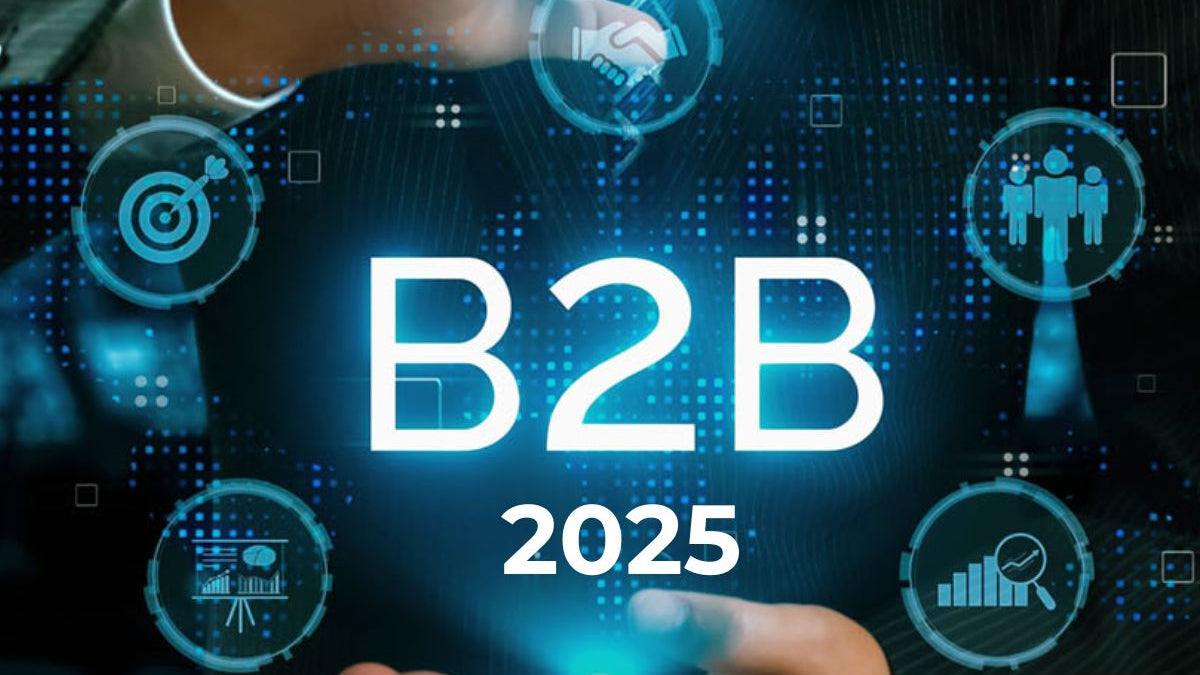B2B eCommerce is experiencing rapid growth. With a current estimated valuation of $18.8T worldwide, it's important to properly prepare your online store to meet the needs of different buyer profiles.
Some of the most important trends for B2B e-commerce for 2025:
1. Independence in the purchasing processes
According to Gartner, 83% of shoppers prefer to manage their orders and accounts online, and TrustRadius says 100% want to self-manage all or part of the purchasing process. How can you facilitate this purchasing process in your online store?
a. Provide access to a personalized portal that allows your customers to easily manage their orders.
b. Implement AI-powered chatbots or automated ticketing systems to guide customers through problem resolution.
c. Provide your customers with up-to-date, personalized pricing.
d. Create a checkout flow that allows for easy order creation.
2. Priority in order fulfillment and shipment tracking
Nearly 66% of B2B buyers confirm that order fulfillment and tracking are two of the most important parameters in their purchasing experience, and they must optimize delivery times to remain competitive.
To achieve this, using third-party logistics (3PL) services is a great option for streamlining the delivery process and reducing inventory management costs. For example, Shopify provides its customers with the Shopify Fulfillment Network, which connects your store with the logistics company Flexport.
3. Marketplaces as a key sales element
Marketplaces are becoming key sales channels for B2B. In fact, according to Digital Commerce's 2024 B2B Marketplace 500 report, B2B marketplace sales grew 100% in 2023.
Companies that incorporate this strategy into their sales model will be better positioned in the market.
4. Ratings
Consumers are accustomed to seeking reviews when making online purchases, and this trend has also reached B2B. According to the latest 2024 TrustRadius annual report, review content is the most important factor B2B decision-makers consider when evaluating a product, with product reviews being the most valued social proof.
5. Headless commerce
Headless commerce will be a growing trend next year because, thanks to its architecture that separates the front-end experience from the back-end, it allows for:
a. Greater customization without affecting the back-end
b. Shorter loading times
c. Less dependence on specialist technical teams
d. Scalability and more agile updates.
6. Omnichannel will be a very important element in the B2B sector as buyers increasingly use more sales channels during their purchasing process.
Omnichannel demands the same level of service across different channels, including in-person, hybrid, internal sales, and B2B marketplaces. Using a B2B e-commerce platform that centralizes all product, order, and customer data across all channels facilitates management and improves the customer experience as the company achieves a unified view of the customer. Did you know that Shopify integrates point-of-sale and e-commerce systems under a single platform?
7. App Development
Mobile shopping apps, especially for fashion brands and retailers, have become a tool that facilitates brand differentiation and positioning. One of the main advantages of adopting an app is direct communication with the customer: through push notifications, in-app ads, or SMS notifications. B2B companies can inform their customers of new products or promotions.
8. Use of social networks
B2B online stores are growing on social media, with a projected global turnover of $8.5 billion by 2030.
B2B buyers use social media to gather information, compare products, and make purchasing decisions. The most important thing, therefore, is to know your customer, which platforms they use, and establish a strategy that's right for your business.
9. B2B organizations are becoming more tech-friendly, seeing their adoption in e-commerce, essential for sales growth and stability. Automation and the use of generative AI, such as Shopify Magic, make it easy and effective to create and update storefronts, a highly valued feature in B2B environments.
10. Hyperpersonalization as a spearhead for B2B companies: Tailor unique messages to individual decision-makers based on factors such as previous brand interactions and predictive analytics software. To facilitate this task, Shopify is developing solutions to help brands deliver DTC (Direct to Consumer)-style experiences to B2B customers:
a. Creating price lists and product catalogs specific to each client.
b. Showing products similar to those a customer has already viewed or purchased.
c. Building customized "best-seller" lists of popular items among businesses of a specific size, region, or industry.
11. Implementation of dynamic pricing strategies through algorithms that adjust prices based on factors such as competition, supply and demand, and time. It's not just about reacting to the market, but also about proactively shaping customer behavior, for example, by adjusting the price of a slow-moving product.
12. Buyers no longer rely solely on trade shows and catalogs; they now have personalized online recommendations at their disposal. Hence the importance of having quality data related to product information, prices, and inventories to offer a unique experience across all channels. In turn, information related to customer behavior will allow brands to forecast availability and offer personalized experiences.
B2B eCommerce is experiencing a growth phase driven by digitalization, personalization, and the adoption of advanced technologies. Companies that adapt to these trends will be better positioned to attract and retain B2B buyers in the future.
At Upango, we decided to invest in Shopify over a year ago . Analyzing the trends for next year, we realize that we were not wrong.
